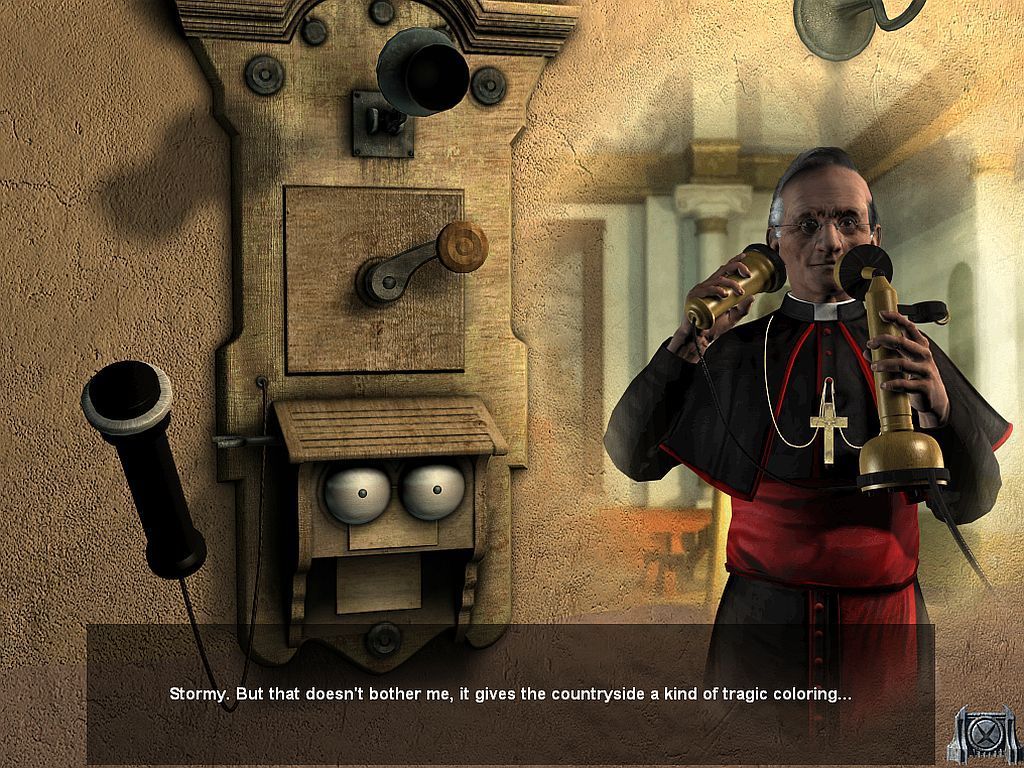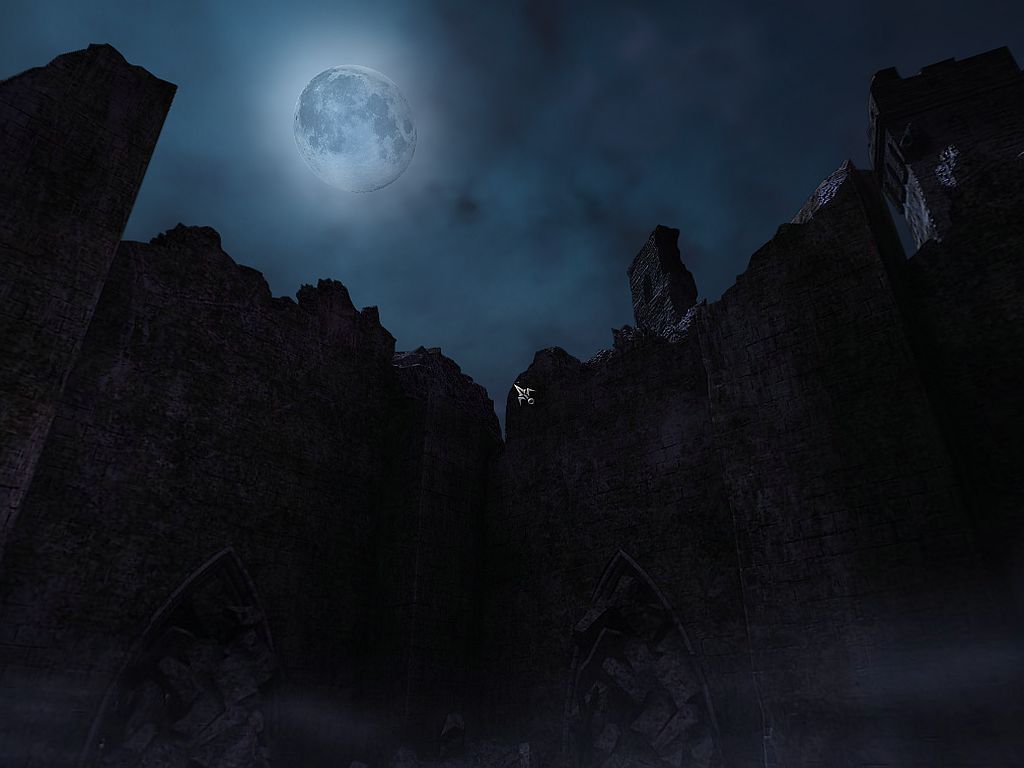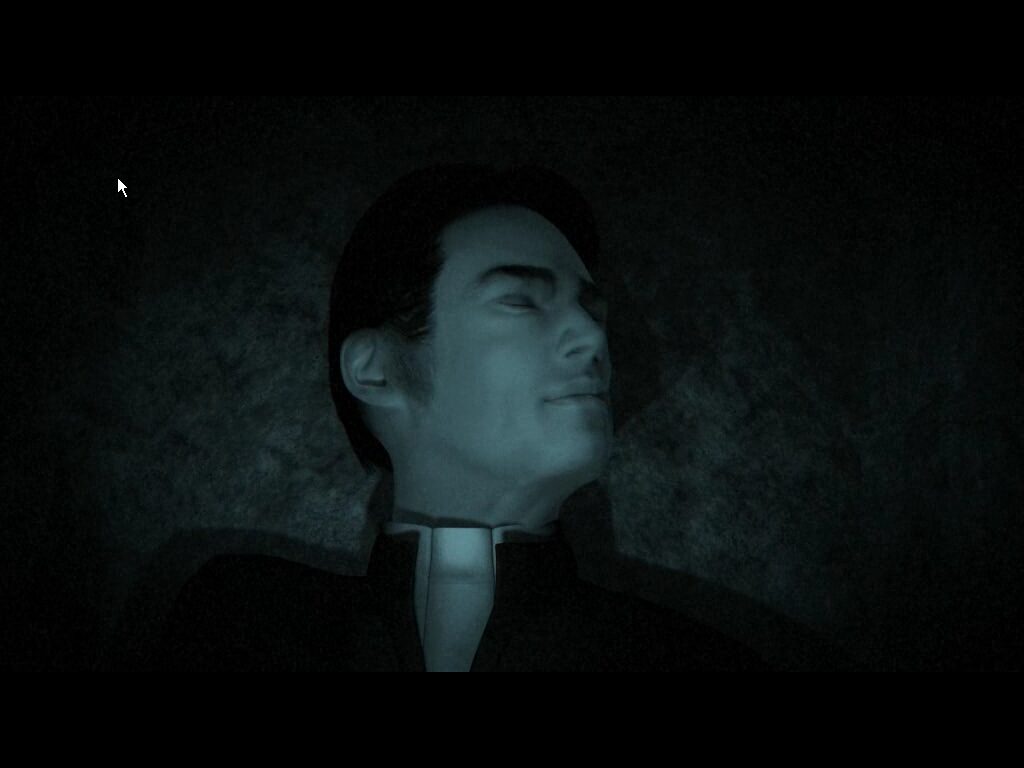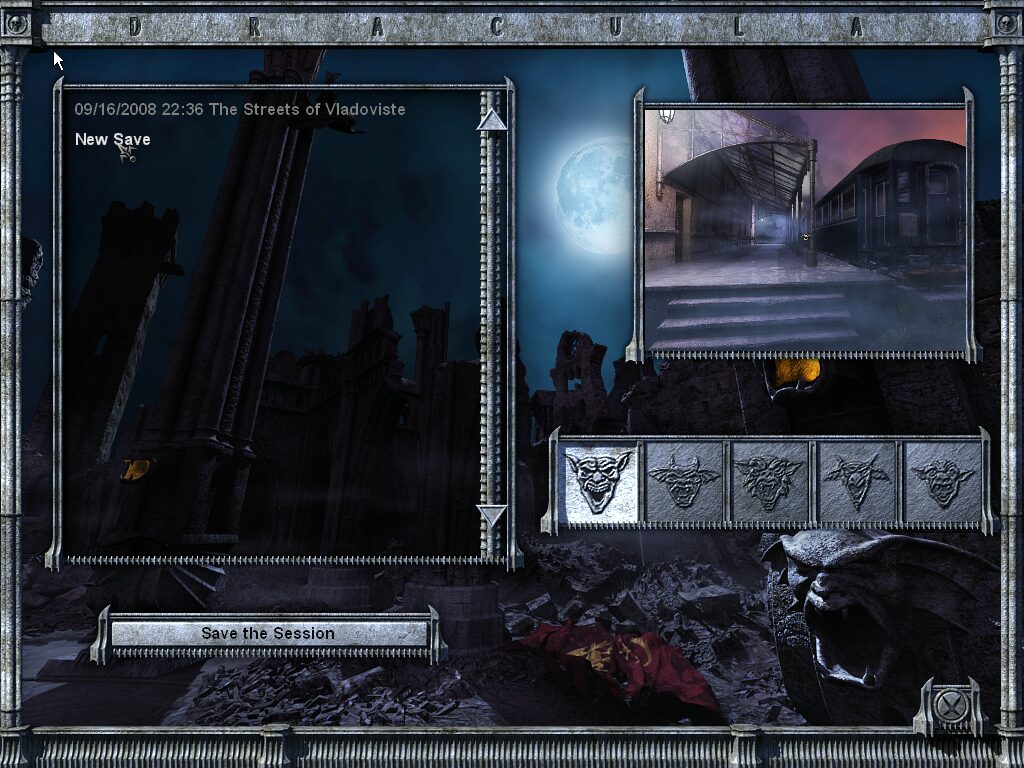Retro Replay Review
Gameplay
Dracula 3: The Path of the Dragon stays true to classic point-and-click adventure conventions, presenting players with a first-person perspective as Father Arno Moriani. Navigating atmospheric environments through a simple cursor interface, each hotspot responds with visual cues to guide your next action. The game’s inventory system feels intuitive, allowing you to combine and examine items without diving through cumbersome menus.
(HEY YOU!! We hope you enjoy! We try not to run ads. So basically, this is a very expensive hobby running this site. Please consider joining us for updates, forums, and more. Network w/ us to make some cash or friends while retro gaming, and you can win some free retro games for posting. Okay, carry on 👍)
The core of Dracula 3 lies in its puzzle design. Enigmas range from logical riddles based on Father Arno’s notes to environmental conundrums that require careful observation. While some challenges can feel straightforward—turning levers, matching symbols—others demand lateral thinking. The built-in objective list and dialogue transcripts serve as a helpful safety net, preventing frustration by letting you retrace your steps and hints at critical clues.
Progression is deliberately paced to heighten suspense. Early on, you’ll focus on routine investigations around the sainted doctor’s corpse, but as strange phenomena mount the game accelerates. This steady buildup ensures that each new discovery—be it a cryptic message, a hidden passage, or an uncanny vision—carries weight. For veteran adventure gamers, Dracula 3 offers a satisfying blend of familiar mechanics and atmospheric tension.
Graphics
From the mist-shrouded gates of the Transylvanian village to the candlelit interior of ancient crypts, Dracula 3 excels in crafting a haunting ambiance. Textures are richly detailed, with weathered stone walls, flickering lanterns, and gnarled trees contributing to a gothic horror palette. Even on older hardware, these visuals effectively evoke the eerie setting at the height of World War I.
Character models, while not cutting-edge by modern standards, serve their purpose in conveying each NPC’s personality. Father Arno’s solemn countenance contrasts with the subtle expressions of villagers torn between reverence and fear. Lighting and shadow play crucial roles: the swing of a lantern can reveal hidden markings, and the glow of moonlight often casts sinister silhouettes that keep you on edge.
Cutscenes are integrated seamlessly into gameplay, with smooth transitions that maintain immersion. Though dated compared to contemporary graphically intensive titles, the game’s aesthetic choices prioritize mood over polygon counts. Whether exploring a decrepit monastery or deciphering runes in a subterranean chamber, Dracula 3’s visuals consistently reinforce its dark, foreboding atmosphere.
Story
The narrative thrust of Dracula 3 centers on Father Arno Moriani, dispatched to Transylvania to examine the remains of a woman doctor venerated as a saint by her wartime community. What begins as a pious inquiry quickly unravels as Arno discovers inexplicable marks on her corpse—marks that defy divine explanation and point toward the legendary Count Dracula himself. This premise sets the stage for a tale that blurs the lines between faith and superstition.
The world War I backdrop is more than window dressing. References to the conflict underscore themes of devotion, sacrifice, and the fragility of life. Dialogues with villagers touch upon the horrors of war and the solace they find in religious icons, lending emotional depth to the mystery. Father Arno’s journal entries further immerse you in his inner turmoil, balancing his missionary zeal with the creeping dread of the supernatural.
Pacing-wise, the plot unspools at a deliberate speed, allowing tension to build as tiny revelations accumulate. While veteran vampire stories sometimes risk predictability, Dracula 3’s use of atmospheric writing and well-timed twists maintains engagement. Unexpected artifacts, cryptic inscriptions, and fleeting apparitions all serve to keep you guessing about Dracula’s true intentions.
Overall Experience
Dracula 3: The Path of the Dragon offers a rich, atmospheric journey for fans of point-and-click adventures and gothic horror. Its steady pacing, challenging yet fair puzzles, and evocative environments combine to deliver an experience that’s as engrossing as it is unsettling. The interface and hint systems ensure that you rarely feel stuck, making it accessible to both newcomers and seasoned adventurers.
While the graphics may show their age against today’s blockbusters, they never undermine the game’s core strength: mood. Each location—from crumbling churchyards to secretive catacombs—feels crafted to instill unease. Father Arno’s investigation into the doctor’s miracles evolves into a deeper confrontation with darkness, driven by well-written dialogue and a haunting soundtrack.
Ultimately, Dracula 3 succeeds in blending classic gameplay mechanics with a compelling story set against the tumult of World War I. Whether you’re drawn by historic intrigue, supernatural suspense, or thoughtful puzzle design, this title delivers a memorable adventure that lingers long after the final secret is uncovered. If you’re seeking a methodical, story-driven experience steeped in vampire lore, The Path of the Dragon is more than worth the journey.
 Retro Replay Retro Replay gaming reviews, news, emulation, geek stuff and more!
Retro Replay Retro Replay gaming reviews, news, emulation, geek stuff and more!









Reviews
There are no reviews yet.